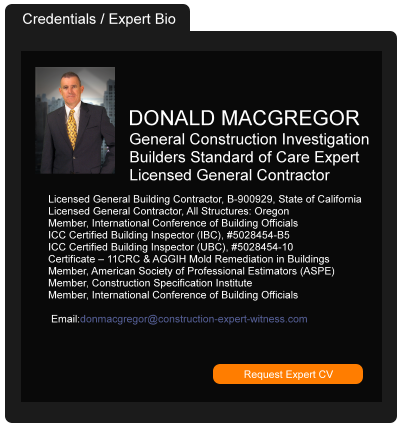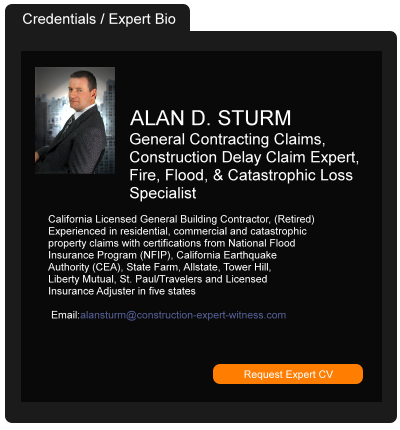Reconstructing the Francis Scott Key Bridge Utilizing the Progressive Design-Build Method
June 04, 2024 —
Lisa D. Love - The Dispute ResolverHaving awakened on the morning of March 26 to the devastating news of the collapse of Baltimore’s Francis Scott Key Bridge after being struck by the Dali, a 984 length /52 beam foot cargo container ship, I thought of the many times I crossed the bridge as a child growing up in Washington, D.C. I also recalled Montgomery Schyler’s comments on the opening of the Brooklyn Bridge, when he stated that “the work which is likely to be our most durable monument, and to convey some knowledge of us to the most remote posterity, is a work of bare utility; not a shrine, not a fortress, not a palace, but a bridge.”
I thought of the beauty of New York’s Mario Cuomo Bridge, a 3.1-mile cable-stayed twin-span bridge with eight traffic lanes, bicycle and pedestrian paths, six lookout points and room for future rapid transit. It was completed in 2018 and constructed under a design-build procurement model[i] at a cost of $3.98 billion. Accelerated bridge construction (ABC) techniques were utilized in its construction. ABC techniques employ innovative planning, design, materials, and construction methods in a safe and cost-effective manner to reduce the on-site construction time that occurs when building new bridges or replacing and rehabilitating existing ones. ABC techniques improve site constructability, total project delivery time, work-zone safety for the traveling public and traffic impacts, on-site construction time, and weather-related time delays.[ii]
I also thought of the gracefulness of Boston’s Leonard P. Zakim Bunker Hill Memorial Bridge, a 0.27-mile hybrid cable-stayed steel and concrete bridge with pedestrian and bicycle access that holds 10 lanes of traffic. The Zakim Bridge was completed in 2004 at a cost of approximately $100 million as part of the $24.3 billion Big Dig.[iii] Despite its elegant, streamlined appearance, the bridge was designed to be exceptionally strong, withstand winds over 400 miles per hour and endure a magnitude 7.9 earthquake.[iv]
Read the court decisionRead the full story...Reprinted courtesy of
Lisa D. Love, JAMS
Newmeyer & Dillion Partner Aaron Lovaas & Casey Quinn Recognized by Super Lawyers
July 21, 2018 —
Newmeyer & DillionLAS VEGAS, Nev. – JUNE 11, 2018 – Prominent business and real estate law firm Newmeyer & Dillion LLP is pleased to announce that partner
Aaron Lovaas has been selected to the 2018 Mountain States Super Lawyers list, and associate
Casey Quinn has been selected to the 2018 Mountain States Rising Stars list by Super Lawyers. Each year, no more than 5 percent of lawyers are named to a Super Lawyers list and less than 2.5 percent are named to the Rising Stars list. This is the 9th consecutive year Lovaas has been honored, while Quinn has been consistently selected as a Rising Star honoree in prior years.
Aaron Lovaas is a partner in the Las Vegas office. As a transactional attorney and business litigator, Lovaas has the ability to evaluate legal issues from both points of view and help his clients understand their best option. He also brings to the table experience as a business owner, having owned and managed his own boutique law firm for 12 years.
Casey Quinn, an associate in the Las Vegas office, focuses his practice in complex commercial and construction litigation. He represents a variety of business entities in commercial disputes, including contract claims, business torts, privacy lawsuits, defamation, and fraud. Quinn is a past chair of the Construction Law section of the State Bar of Nevada and has successfully argued before the Supreme Court of Nevada, as well as settled disputes through various forms of conflict resolution including mediation and arbitration.
Super Lawyers is a rating service of outstanding lawyers from more than 70 practice areas who have attained a high-degree of peer recognition and professional achievement. The patented selection process includes independent research, peer nominations and peer evaluations.
About Newmeyer & Dillion
For more than 30 years, Newmeyer & Dillion has delivered creative and outstanding legal solutions and trial results for a wide array of clients. With over 70 attorneys practicing in all aspects of business, employment, real estate, construction and insurance law, Newmeyer & Dillion delivers legal services tailored to meet each client's needs. Headquartered in Newport Beach, California, with offices in Walnut Creek, California and Las Vegas, Nevada, Newmeyer & Dillion attorneys are recognized by The Best Lawyers in America©, and Super Lawyers as top tier and some of the best lawyers in California, and have been given Martindale-Hubbell Peer Review's AV Preeminent® highest rating. For additional information, call 949.854.7000 or visit www.ndlf.com.
Read the court decisionRead the full story...Reprinted courtesy of
The National Building Museum’s A-Mazing Showpiece
July 09, 2014 —
Beverley BevenFlorez-CDJ STAFFThe “massive maze” designed by the Bjarke Ingels Group (BIG) is now open at the National Building Museum in Washington D.C., reported Architect Magazine. The roughly 60-foot square maze reaches about 18 feet, but the “walls slope in toward the center, allowing visitors to see more of the maze as they move through it.” When you reach the center, you get a complete overview of the maze.
Read the court decisionRead the full story...Reprinted courtesy of
Insurer Must Defend and Indemnify Construction Defect Claims Under Iowa Law
February 23, 2017 —
Tred R. Eyerly – Insurance Law HawaiiApplying Iowa law, the federal district court found that the insurer had to defend and indemnify construction defect claims for damage to property caused by the insured's subcontractors. Van Der Weide v. Cincinnati Ins., 2017 U.S. Dist. LEXIS 4469 (N.D. Iowa Jan. 12, 2017).
Van Der Weide contracted with Bouma & Company, Inc. to construct a house in 1996. Before construction began, Bouma purchased a CGL policy and a separate umbrella policy from Cincinnati, which were in effect from January 30, 1996 to January 30, 1999.
Bouma used various subcontractors to build the home, including Elkato Masonry, which did the brick veneer and masonry work. The house was completed in February 1998 and Van Der Weide moved in during August 1998.
Read the court decisionRead the full story...Reprinted courtesy of
Tred R. Eyerly, Insurance Law HawaiiMr. Eyerly may be contacted at
te@hawaiilawyer.com
Housing Starts Rebound in U.S. as Inflation Eases: Economy
August 20, 2014 —
Lorraine Woellert and Victoria Stilwell – BloombergHome construction rebounded in July and the cost of living rose at a slower pace, showing a strengthening U.S. economy has yet to generate a sustained pickup in inflation.
A 15.7 percent jump took housing starts to a 1.09 million annualized rate, the strongest since November, and halted a two-month slide, the Commerce Department said in Washington. The consumer price index increased 0.1 percent after rising 0.3 percent in June, the Labor Department also reported.
An improving job market and cheaper borrowing costs are helping revive residential real estate, helping boost sales at companies such as Home Depot Inc. (HD) As inflation continues to run below the Federal Reserve’s target, it gives the central bank room to keep interest rates low well after the projected end of its bond-buying program in October.
Read the court decisionRead the full story...Reprinted courtesy of
Lorraine Woellert and Victoria Stilwell, Bloomberg
Construction Defect Claims Not Covered
May 10, 2022 —
Tred R. Eyerly - Insurance Law HawaiiThe court found that the insured's negligent acts causing damage to only the structure of the home it built were not covered under the CGL policy. Westfield Ins. Co. v. Zaremba Builders II LLC, 2022 U.S. Dist. LEXIS 36189 (N.D. Ill. March 2, 2022).
Zaremba contracted to build a house for the Vrdolyak Trust. After completion of the home, the occupants found many problems, including painting defects such as bubbling and peeling, leaving the basement full of water for months, causing damage to ductwork, framing and piping in the house, etc. The Trust sued and Westfield denied a defense.
Westfield filed a declaratory judgment action for a ruling that it had no duty to defend or indemnify. On Westfield's motion for summary judgment, the court determined there was no property damage. Property damage included "physical injury to tangible property." When the alleged damage occurred in the course of a construction project, tangible property had to be property outside the scope of the contract for project.
Read the court decisionRead the full story...Reprinted courtesy of
Tred R. Eyerly, Damon Key Leong Kupchak HastertMr. Eyerly may be contacted at
te@hawaiilawyer.com
Best Practices: Commercial Lockouts in Arizona
March 19, 2024 —
Patrick Tighe - Snell & Wilmer Real Estate Litigation BlogIf a tenant defaults under a commercial lease, Arizona law permits the landlord to re-take possession of the premises by locking out the defaulting tenant. However, if the landlord’s lockout is wrongful, the landlord may be liable for the damages the tenant sustains because of the wrongful lockout. To minimize such liability, here are some general best practices to follow when locking out a defaulting tenant:
- Do Not Breach the Peace. It is vital when performing a lockout to not breach the peace. What constitutes a “breach of the peace” depends on the particular circumstances at hand. For example, if a tenant arrives during the lockout and becomes angry or threatens violence, the landlord should stop performing the lockout and return at a later time. As a general rule of thumb, it is best to perform lockouts in the early morning hours or in the late evening hours when the landlord is less likely to encounter the tenant.
- Provide A Notice of Default. Many commercial leases require the landlord to provide a notice of default before the landlord can lock out a defaulting tenant. Check, double check, and triple check that the landlord followed the lease’s notice of default provisions correctly, including that the landlord sent the notices to all required parties in accordance with the time requirements set forth in the lease.
Read the court decisionRead the full story...Reprinted courtesy of
Patrick Tighe, Snell & WilmerMr. Tighe may be contacted at
ptighe@swlaw.com
“Pay When Paid” Provisions May Not Be Dead, at Least Not Yet
August 24, 2020 —
Garret Murai - California Construction Law BlogSophisticated contractors know that in California contractual “pay when paid” provisions are enforceable but that “pay if paid” provisions are not.
“Pay If Paid” v. “Pay When Paid” Provisions
A “pay if paid” provision is one in which a higher tier party agrees to pay a lower tier party “if” it is paid in turn by a still higher party. Most commonly they are found in subcontracts between general contractors and subcontractors and provide that the general contractor will pay the subcontractor “if” the general contractor is paid by the project owner. However, they can also be found in subcontracts between higher and lower tiered subcontractors and between subcontractors and material suppliers and equipment lessors. In California, such provisions, which create a condition precedent to payment, namely, a condition that must precede payment to a lower tiered party, are void as a matter of law.
Read the court decisionRead the full story...Reprinted courtesy of
Garret Murai, Nomos LLPMr. Murai may be contacted at
gmurai@nomosllp.com


































































